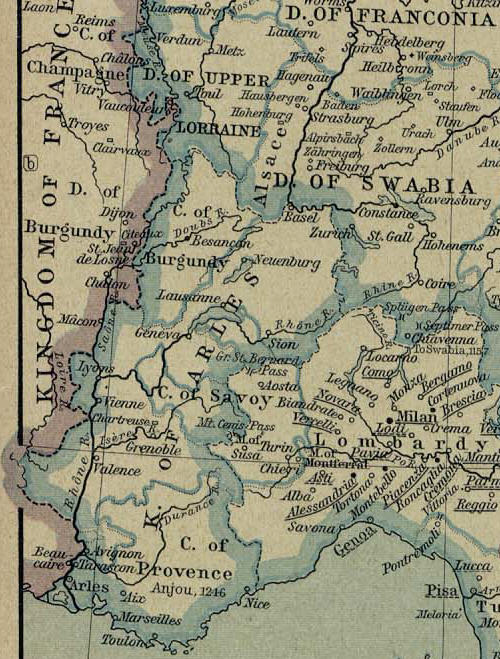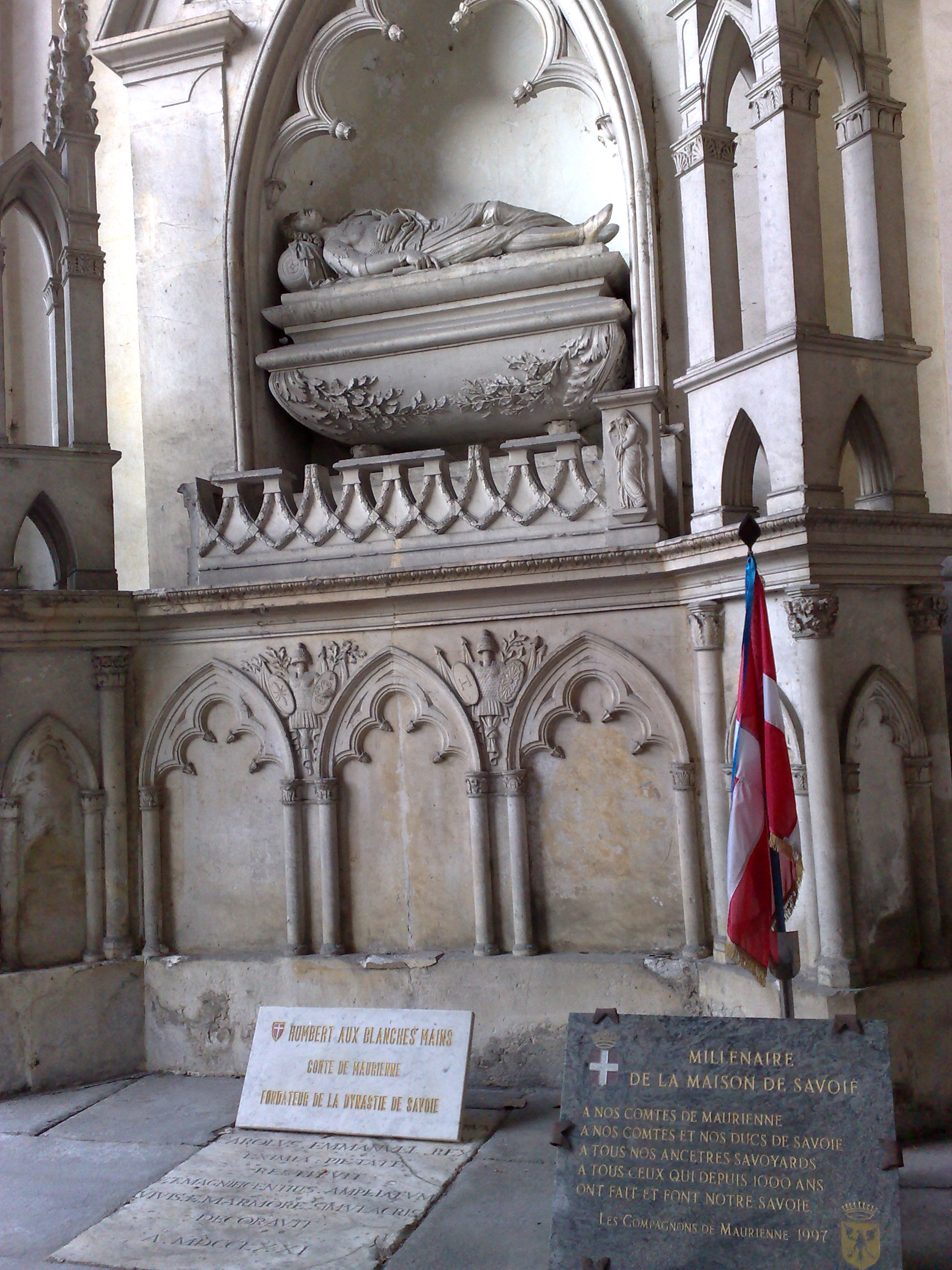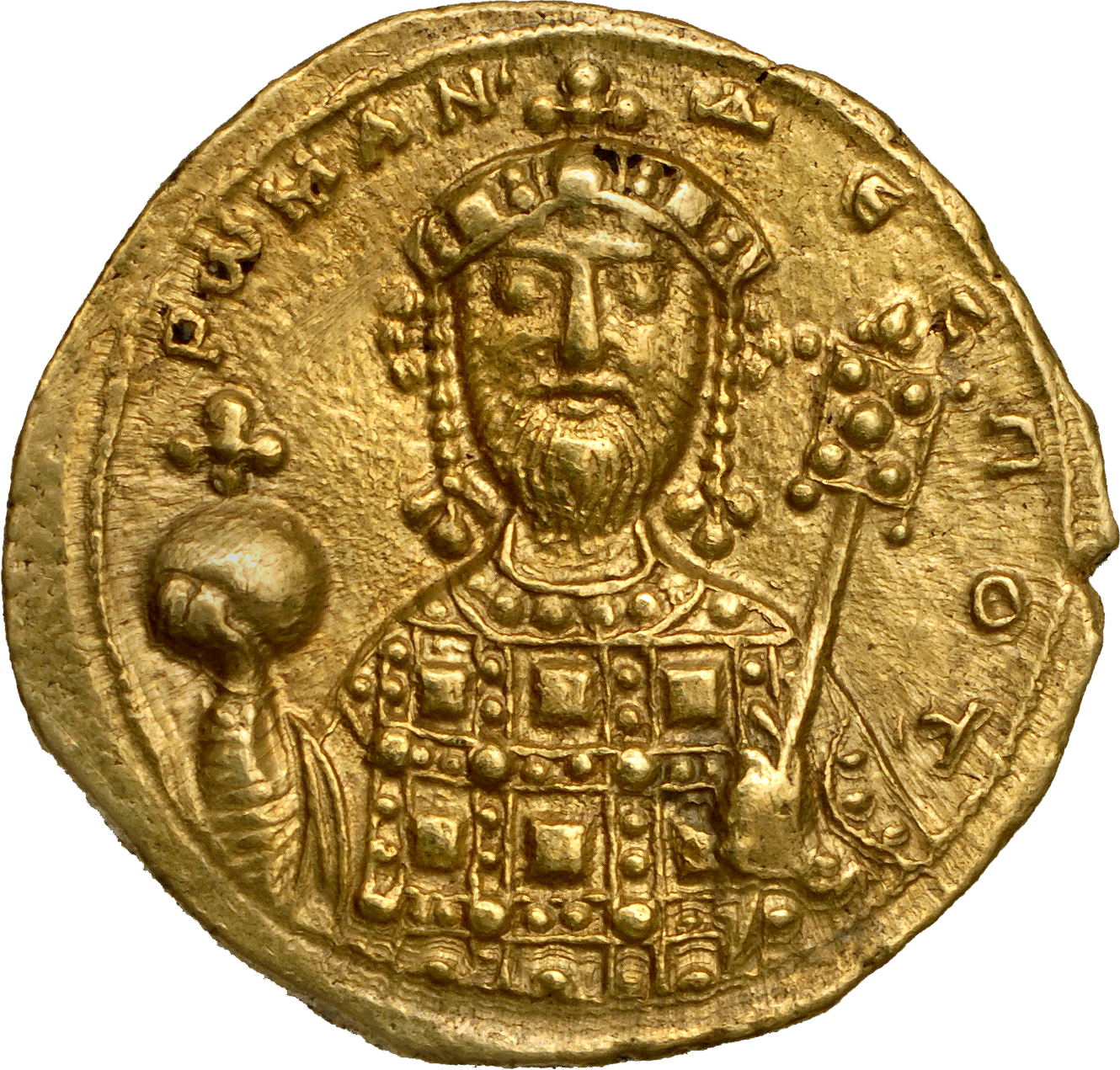|
1032
Year 1032 ( MXXXII) was a leap year starting on Saturday (link will display the full calendar) of the Julian calendar. Events By place Byzantine Empire * Spring – Emperor Romanos III (Argyros) sends a Byzantine expeditionary army under General Michael Protospatharios, which includes Western auxiliaries and elite troops of Asia Minor, to reinforce the Byzantine position in Calabria (Southern Italy). Europe * September 6 – King Rudolph III dies without any heirs. He bequeaths his entire dominions to Emperor Conrad II (the Elder), dispatching to him the Holy Lance and ring of St. Maurice, symbols of Burgundian investiture. * Odo II, count of Champagne, invades Burgundy and seizes most of the kingdom for himself. C.W. Previté-Orton, ''The Early History of the House of Savoy'', (Cambridge University Press, 1912), p. 30. With the assistance of Humbert I of Savoy, Queen-dowager Ermengarde (Rudolph III's widow) flees to the safety of Zürich. * Winter &ndas ... [...More Info...] [...Related Items...] OR: [Wikipedia] [Google] [Baidu] |
Pope Benedict IX
Pope Benedict IX ( la, Benedictus IX; c. 1012 – c. 1056), born Theophylactus of Tusculum in Rome, was the bishop of Rome and ruler of the Papal States on three occasions between October 1032 and July 1048. Aged approximately 20 at his first election, he is one of the youngest popes in history. He is the only man to have been Pope on more than one occasion and the only man ever to have sold the papacy. He was the nephew of his immediate predecessor, John XIX. In October 1032, Benedict's father obtained his election through bribery. However, his reputed dissolute activities provoked a revolt on the part of the Romans. Benedict was driven out of Rome and Sylvester III elected to succeed him. Some months later, Benedict and his supporters managed to expel Sylvester. Benedict then decided to resign in favor of his godfather, Gregory VI, provided he was reimbursed for his expenses. Benedict subsequently had second thoughts and returned, and attempted to depose Gregory VI. A number o ... [...More Info...] [...Related Items...] OR: [Wikipedia] [Google] [Baidu] |
Conrad II, Holy Roman Emperor
Conrad II ( – 4 June 1039), also known as and , was the emperor of the Holy Roman Empire from 1027 until his death in 1039. The first of a succession of four Salian emperors, who reigned for one century until 1125, Conrad ruled the kingdoms of Germany (from 1024), Italy (from 1026) and Burgundy (from 1033). The son of Franconian count Henry of Speyer (also Henry of Worms) and Adelaide of Metz of the ''Matfriding dynasty'', that had ruled the Duchy of Lorraine from 959 until 972, Conrad inherited the titles of count of Speyer and Worms during childhood after his father had died around the year 990. He extended his influence beyond his inherited lands, as he came into favor of the princes of the kingdom. When the imperial dynastic line was left without a successor after Emperor Henry II's death in 1024, on 4 September an assembly of the imperial princes appointed the 34-year-old Conrad king (''Rex romanorum''). Conrad II Ottonian adopted many aspects of his Ottonian predece ... [...More Info...] [...Related Items...] OR: [Wikipedia] [Google] [Baidu] |
Pope John XIX
Pope John XIX ( la, Ioannes XIX; died October 1032), born Romanus, was the bishop of Rome and ruler of the Papal States from 1024 to his death. He belonged to the family of the powerful counts of Tusculum, succeeding his brother, Benedict VIII. Papal relations with the Patriarchate of Constantinople soured during John XIX's pontificate. He was a supporter of Emperor Conrad II and patron of the musician Guido of Arezzo. Family Romanus was born in Rome. He was the third son of Count Gregory I of Tusculum and his wife, Mary. During the pontificate of his brother, Benedict VIII, Romanus held the temporal power in the city as consul and senator. Upon the death of Benedict, Romanus, a layman, was elected to succeed him. He was immediately ordained in all the orders in succession, and consecrated bishop in order to enable him to ascend the papal chair. He took the name of John. [...More Info...] [...Related Items...] OR: [Wikipedia] [Google] [Baidu] |
Rudolph III Of Burgundy
Rudolph III (french: Rodolphe, german: Rudolf; – 6 September 1032), called the Idle or the Pious, was the king of Burgundy from 993 until his death. He was the last ruler of an independent Kingdom of Burgundy, and the last male member of the Burgundian group of the Elder House of Welf. Family Rudolph was the son and heir of King Conrad I of Burgundy (925–993). His mother Matilda (943–980), a member of the Frankish Carolingian dynasty, was the daughter of King Louis IV of France. Rudolph himself had three sisters: Gerberga, who married Duke Herman II of Swabia about 988, Bertha, married to Count Odo I of Blois and secondly to King Robert II of France in 996, and Gisela, who married the Ottonian duke Henry II of Bavaria and became the mother of Emperor Henry II. Reign Rudolph succeeded to the Burgundian throne upon his father's death on 19 October 993 and was crowned king in Lausanne. His reign was marked with turbulence when he made attempts to confiscate several Burgun ... [...More Info...] [...Related Items...] OR: [Wikipedia] [Google] [Baidu] |
Kingdom Of Italy (Holy Roman Empire)
The Kingdom of Italy ( la, Regnum Italiae or ''Regnum Italicum''; it, Regno d'Italia; german: Königreich Italien), also called Imperial Italy ( it, Italia Imperiale, german: Reichsitalien, links=no), was one of the constituent kingdoms of the Holy Roman Empire, along with the kingdoms of Germany, Bohemia, and Burgundy. It originally comprised large parts of northern and central Italy. Its original capital was Pavia until the 11th century. In 773, Charlemagne, the king of the Franks, crossed the Alps to invade the Kingdom of the Lombards, which encompassed all of Italy except the Duchy of Rome, the Venetian Republic and the Byzantine possessions in the south. In June 774, the kingdom collapsed and the Franks became masters of northern Italy. The southern areas remained under Lombard control, as the Duchy of Benevento was changed into the rather independent Principality of Benevento. Charlemagne called himself king of the Lombards and in 800 was crowned emperor in Rome. Members ... [...More Info...] [...Related Items...] OR: [Wikipedia] [Google] [Baidu] |
Kursk
Kursk ( rus, Курск, p=ˈkursk) is a city and the administrative center of Kursk Oblast, Russia, located at the confluence of the Kur, Tuskar, and Seym rivers. The area around Kursk was the site of a turning point in the Soviet–German struggle during World War II and the site of the largest tank battle in history. Geography Urban layout Kursk was originally built as a fortress city, on a hill dominating the plain. The settlement was surrounded on three sides by steep cliffs and rivers. From the west, the Kur river, from the south and east, the Tuskar river, and from the north, forest thickets approached it. By 1603, Kursk had become a large military, administrative and economic center of a vast territory in the south of the country. The new fortress was built under the leadership of the governor Ivan Polev and Nelyub Ogaryov. The Kursk fortress was given a particularly important role, since in these places the Crimean Tatars, who made regular raids on Russia, traditio ... [...More Info...] [...Related Items...] OR: [Wikipedia] [Google] [Baidu] |
Odo II, Count Of Blois
Odo II () (983 – 15 November 1037) was the count of Blois, Chartres, Châteaudun, Beauvais and Tours from 1004 and count of Troyes (as Odo IV) and Meaux (as Odo I) from 1022. He twice tried to make himself a king: first in Italy after 1024 and then in Burgundy after 1032. Life Born around 983, Odo II was the son of Odo I of Blois and Bertha of Burgundy. He was the first to unite Blois and Champagne under one authority although his career was spent in endless feudal warfare with his neighbors and suzerains, many of whose territories he tried to annex. About 1003/1004 he married Maud, a daughter of Richard I of Normandy. After her death in 1005, and as she had no children, Richard II of Normandy demanded a return of her dowry: half the county of Dreux. Odo refused and the two warred over the matter. Finally, King Robert II, who had married Odo's mother, imposed his arbitration on the contestants in 1007, leaving Odo in possession of the castle Dreux while Richard II kept the re ... [...More Info...] [...Related Items...] OR: [Wikipedia] [Google] [Baidu] |
Humbert I, Count Of Savoy
Humbert I ( it, Umberto I; 950 – 1042 or 1047 1048), better known as Humbert the White-Handed (french: Humbert aux blanches-mains) or ( it, Umberto Biancamano), was the founder of the House of Savoy. Of obscure origins, his service to the Holy Roman Emperors Henry II and Conrad II was rewarded with the counties of Maurienne and Aosta and lands in Valais, all at the expense of local bishops and archbishops; the territory came to be known as the county of Savoy. Biography Family Humbert was the son of Amadeus, who may or may not have preceded him as count of Maurienne. His brother was Bishop Otto of Belley. Humbert is the progenitor of the dynasty known as the House of Savoy. The origins of this dynasty are unknown, but Humbert's ancestors are variously said to have come from Saxony, Burgundy or Provence. Given Humbert's close connections with Rudolf III of Burgundy, it is likely that his family was Burgundian, and was descended either from the dukes of Vienne, or f ... [...More Info...] [...Related Items...] OR: [Wikipedia] [Google] [Baidu] |
Romanos III Argyros
Romanos III Argyros ( el, Ρωμανός Αργυρός; Latinized Romanus III Argyrus; 968 – 11 April 1034), or Argyropoulos was Byzantine Emperor from 1028 until his death. He was a Byzantine noble and senior official in Constantinople when the dying Constantine VIII forced him to divorce his wife and marry the emperor's daughter Zoë. Upon Constantine's death three days later, Romanos took the throne. Romanos has been recorded as a well-meaning but ineffective emperor. He disorganised the tax system and undermined the military, personally leading a disastrous military expedition against Aleppo. He fell out with his wife and foiled several attempts on his throne, including two which revolved around his sister-in-law Theodora. He spent large amounts on the construction and repair of churches and monasteries. He died after six years on the throne, allegedly murdered, and was succeeded by his wife's young lover, Michael IV. Life Family and early career Romanos Argyros, bor ... [...More Info...] [...Related Items...] OR: [Wikipedia] [Google] [Baidu] |
Michael Protospatharios
Michael Protospatharios ( it, Michele Protospatario) was the Byzantine catepan of Italy from 1031 to 1033. He was sent to Bari after his predecessor, Pothos Argyrus, was killed in battle with the Saracens who took Cassano allo Ionio in Calabria. Michael was high and lofty official in the imperial court of Constantinople. He held several high-ranking titles. At the height of his career, his full title was: ', that is, "Chamberlain, catepan of Italy, and kritēs of the vēlonThe term ''vēlon'' can stand for either sail, curtain or banner (from latin ''velum''). In this case it denotes the curtain behind which the judges assembled (ODB, p. 2157). and the Hippodrome". The ''kritēs'' was probably an officer in charge of processing requests for the audience of the emperor. Michael arrived in Italy early in 1032 with a new army, composed not only of recruits from the West or the auxiliaries, but also from the elite troops of Asia Minor Anatolia, tr, Anadolu Yarımadası), an ... [...More Info...] [...Related Items...] OR: [Wikipedia] [Google] [Baidu] |
Russia
Russia (, , ), or the Russian Federation, is a List of transcontinental countries, transcontinental country spanning Eastern Europe and North Asia, Northern Asia. It is the List of countries and dependencies by area, largest country in the world, with its internationally recognised territory covering , and encompassing one-eighth of Earth's inhabitable landmass. Russia extends across Time in Russia, eleven time zones and shares Borders of Russia, land boundaries with fourteen countries, more than List of countries and territories by land borders, any other country but China. It is the List of countries and dependencies by population, world's ninth-most populous country and List of European countries by population, Europe's most populous country, with a population of 146 million people. The country's capital and List of cities and towns in Russia by population, largest city is Moscow, the List of European cities by population within city limits, largest city entirely within E ... [...More Info...] [...Related Items...] OR: [Wikipedia] [Google] [Baidu] |
Zürich
Zürich () is the list of cities in Switzerland, largest city in Switzerland and the capital of the canton of Zürich. It is located in north-central Switzerland, at the northwestern tip of Lake Zürich. As of January 2020, the municipality has 434,335 inhabitants, the Urban agglomeration, urban area 1.315 million (2009), and the Zürich metropolitan area 1.83 million (2011). Zürich is a hub for railways, roads, and air traffic. Both Zurich Airport and Zürich Hauptbahnhof, Zürich's main railway station are the largest and busiest in the country. Permanently settled for over 2,000 years, Zürich was founded by the Roman Empire, Romans, who called it '. However, early settlements have been found dating back more than 6,400 years (although this only indicates human presence in the area and not the presence of a town that early). During the Middle Ages, Zürich gained the independent and privileged status of imperial immediacy and, in 1519, became a primary centre of the Protestant ... [...More Info...] [...Related Items...] OR: [Wikipedia] [Google] [Baidu] |




